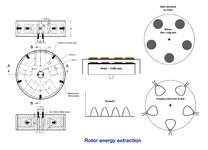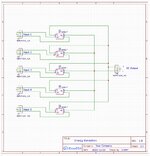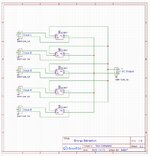Kerrowman
Member level 4
- Joined
- Oct 12, 2021
- Messages
- 75
- Helped
- 0
- Reputation
- 0
- Reaction score
- 2
- Trophy points
- 8
- Location
- West Penwith
- Activity points
- 578
Hi all,
I’m looking to find an electronic way to extract the kinetic energy of a spinning rotor.
At the moment I have a rotor spinning at between 2,500-3,000 rpm driven by 5 solenoids that provide triggering for a FET that produces CEMF pulses of 800-1000V.
I’m able to harness the energy of the pulses and would also like to do the same for the rotor.
My idea so far is to have a set of 5 disc magnets secured to the top of the rotor (see pic) and which would spin under some configuration of pickup coils.
Assuming the induced voltage is an AC waveform this would need to be rectified to feed to a battery so I can’t imagine the circuitry would be that complicated.
I would appreciate any thoughts on the idea, the coil shape and configuration and the required circuit.
Thanks
Jules
I’m looking to find an electronic way to extract the kinetic energy of a spinning rotor.
At the moment I have a rotor spinning at between 2,500-3,000 rpm driven by 5 solenoids that provide triggering for a FET that produces CEMF pulses of 800-1000V.
I’m able to harness the energy of the pulses and would also like to do the same for the rotor.
My idea so far is to have a set of 5 disc magnets secured to the top of the rotor (see pic) and which would spin under some configuration of pickup coils.
Assuming the induced voltage is an AC waveform this would need to be rectified to feed to a battery so I can’t imagine the circuitry would be that complicated.
I would appreciate any thoughts on the idea, the coil shape and configuration and the required circuit.
Thanks
Jules


